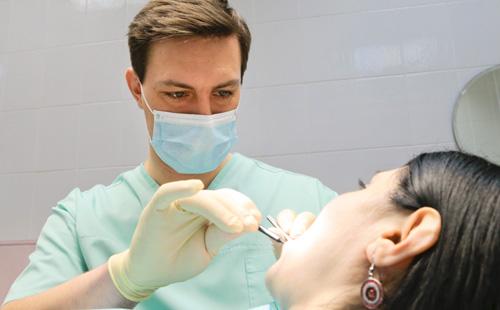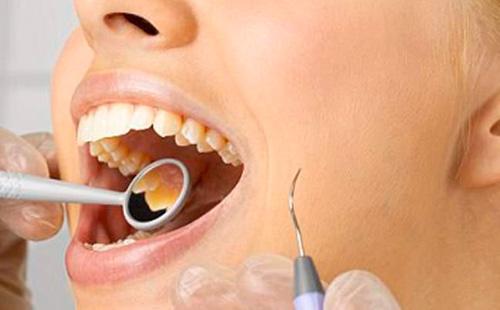The content of the article
Darkening of the teeth can occur not only from the outside, but also from the inside. And in such cases, the most advanced methods of external whitening, such as laser or Zoom 3, are absolutely ineffective. Why does internal staining occur, and how to deal with it?
Causes of Teeth Darkening
The main reason for the discoloration of the molars is medical intervention. After treatment of caries and filling, the internal tissues can be stained. So, for example, when using a filling material with an admixture of silver, the tissues are dyed gray, formalin-based compounds give the teeth a pink hue. An unnatural tone is visible even after the crown is applied, since in the gum area the lower part of the molar remains uncovered, and the gum itself becomes cyanotic.
Other causes of tooth discoloration from the inside:
- Molar removal - pulp removal during treatment to exclude the development of inflammatory pulpitis. Due to the lack of a natural “filler” the tooth darkens;
- mummification of a nerve - death or removal of nerves also entails darkening of tissues;
- enamel damage - in the presence of deep cracks on its surface, coloring substances (coffee, tea, juices and red wine, tobacco smoke) penetrate the tooth structure. And to eliminate their impact by external means becomes impossible.

Features of the technique
Indications that allow the teeth to be whitened include darkening for the above reasons.
Contraindications are:
- age to 16 years - during this period, the dental tissue is not fully formed;
- the presence of caries - first, the doctor must cure all affected molars, and only then proceed with the whitening procedure;
- the presence of colored fillings - when performing intracoronary tooth whitening, the doctor can change the color of exclusively natural tissues. It is impossible to affect the tonality of the fillings, therefore it is recommended to change them;
- individual intolerance of hydrogen peroxide;
- increased enamel sensitivity;
- pregnancy and lactation.
Method Description
Intracanal teeth whitening is carried out after an X-ray examination, which allows to clarify the features of the preliminary treatment method. After that, the doctor opens the tooth cavity, cleans the dark tissue, introduces a special whitening gel based on sodium perbonate. A temporary filling is applied to the patient.
Thanks to the effect directly on the affected area, the whitening composition allows you to achieve an excellent result. But a clear clarification is achieved after the second or third procedure, after which you can put a permanent seal. In this case, the doctor installs special gaskets between the filling and the walls of the tooth in order to prevent darkening in the future. The total treatment period is 2 weeks.
An important advantage of tooth whitening is the absolute painlessness of the method. Efficiency allows it to be used for patients with filled "live" teeth, as well as for people with "dead" molars and when wearing modern ceramic crowns, through which the darkening of covered tissues comes out.
The possibility of periodic reference as necessary - Another advantage of intracanal tooth whitening.Reviews demonstrate the preservation of the effect up to several years, but if the molar darkens again, the doctor can open it again and carry out sanitation from the inside.

Hazards and Risks
- If uneven darkening of tooth enamel is detected, do not do it yourself whitening. It is important to conduct an early diagnosis of tissue damage so that intracanal whitening of the teeth provides high efficiency with gentle exposure. Unfortunately, many people are trying to return the original color of enamel at home, referring to aggressive techniques. When it comes to darkening from the inside, they are not only ineffective, but also dangerous, since they actively destroy enamel and reduce the likelihood of successful treatment.
- For the procedure, chemicals that destroy the protein dyes contained in the filling materials are used. Their impact is quite aggressive, so it is extremely important to control the frequency and amount of the whitening gel. Due to the risk to dental health, you should only contact an experienced doctor with the appropriate license.
- When performing bleaching in a depulpated ("dead") tooth, its strength is weakened. The reason for this is the lack of living tissue that could recover over time. Because of this, it is necessary to apply a minimum number of whitening procedures (a total of no more than 4), since a tooth and a tooth crown are likely to break.
It is important to remember that endo-whitening is the same medical intervention in the cavity of the tooth as its treatment, therefore it requires high professionalism of the doctor. With a qualified approach, it is possible to completely get rid of an unpleasant shade of enamel without consequences.

